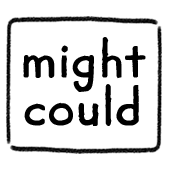
Yesterday I was listening to a podcast (Dolly Parton’s America, if you’re interested) and the host kept mentioning falling down rabbit holes, which got me thinking about the creative process again.
As artists, we tend to travel through cycles of activity and inactivity. We’re all aware of the times of activity: the moments when inspiration strikes, obsessions flourish, and the work gets done. This is when our creative productivity and energy are highest.
But once we complete a project or see an obsession through to its end, a period of inactivity inevitably follows. This is when our creative output and energy are lowest. And we’re often not accepting of that quiet part of the creative process.

After the completion of a project, we often feel lost and unsure of where to go next. We had been dutifully chipping away at this grand idea, guided by a strong voice for so long, and now suddenly, we’re back to the blank page, overwhelmed by the silence.
I suppose we expect to jump from big project to big project, from brilliant idea to brilliant idea. But in reality, there is always a lull between ideas and projects, a time when we have to just float. And that lull is there for a reason.
We just poured all our energy into that last project, focused all our imagination on that last idea, and now our creativity batteries are running low. Sometimes during this part of the process we feel a little bored. And then we fight the next phase of the creative process. We feel guilty and ashamed for feeling bored with our art—we don’t want to accept or experience this period of inactivity.

We experience this phase over and over, and yet every time it hits, it makes us worry we’ve lost our mojo, we’re being lazy, or we’re not being a “good enough” artist.
But taking our time after a big project to rest and relax isn’t lazy, it isn’t the same as creative block, and it’s never a sign of failing to be an artist. In fact, it’s one of the best signs of an artist there is. It’s an unavoidable and important part of the creative process.
We have to allow ourselves this slow time, because this is the time when new ideas are found. This quiet time is a time of exploration and discovery. It’s our way of finding the next project, the next obsession, the next piece of art we’ll make.

The trick to remember, though, is that this slow time of discovery can’t be rushed. This is when we have to get quiet and introspective, paying attention to what we pay attention to. What new curiosities are popping up? What things have we begun to notice more? What new obsessions are dancing on the horizon, beckoning us near?
A big idea often doesn’t seem big from the beginning, it starts as a tiny whisper. To hear that tiny voice and follow that thin thread that can become a big idea, we have to be in a place of quiet rest, with a slight empty boredom.
We have to allow ourselves this time and give ourselves over to the process—the entire process, not just the exciting productivity phase. You may not feel like you’re being productive during the quiet discovery phase, compared to your physical output in the creation phase, but this listening time is just as important, perhaps more so.

So if you’re feeling bored, or lazy, or unproductive, consider: maybe you’re ready for your next big idea? Are you in this listening phase? Are you looking for your next creative project? Are you giving yourself over to this quiet slow phase of the creative process?
Are you allowing yourself to float until you find your next rabbit hole?

